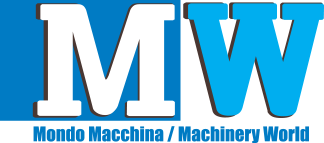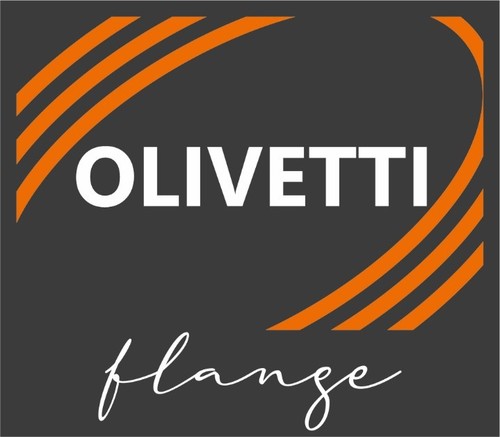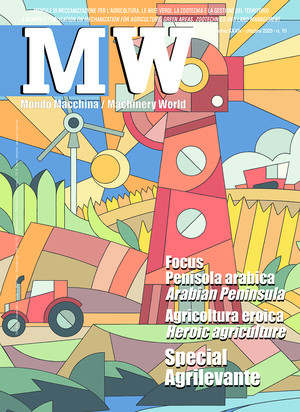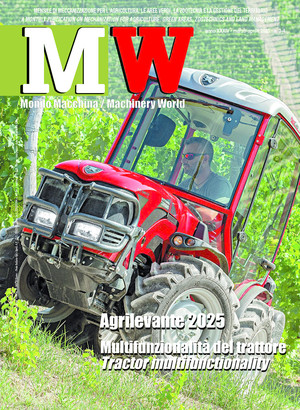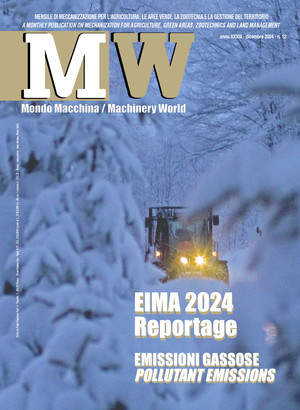
The geopolitical crisis boosts North African markets
New geopolitical scenarios are radically changing the geography of international trade, favoring nearshoring activities. The paradigm shift in the global trade system is shining a spotlight on the strategic importance of the Mediterranean region
In April 2025, after a phase of skirmishes and political declarations, the international trade scenario has begun to define the new rules of the game for global trade, with the application of the various tools available to governments (duties and non-tariff barriers). What seems certain is the centrality assumed by States in economic competition at a global level. We can in fact say that competition between companies has become secondary to that between nations. In this new framework, internationalization is defined primarily by how it is seen by individual countries, rather than by the corporate system.
Internationalization, the weight of geopolitics. This scenario also raises problems for the economic theory of international trade, which is traditionally based on business behavior. We will limit ourselves to just two examples that are highly significant of the new scenario and well represented in the media. The first is the desire of the new US Administration to “reclaim” its manufacturing sector, neglected for years in favor of services and finance, through policies that favor the relocation of production activities to the United States. The second “case” is that of the automotive sector, which clearly sees Europe, the USA and China facing off in a global confrontation in which Italy also experiences the effects and, in the European context, together with Germany is suffering the same serious crisis in the sector. The crux of these considerations is that the assessment of geopolitical variables by companies becomes in this context the precondition for initiating their own internationalization project. The paradigm shift in the global trade system also requires Italy to redefine markets, sectors and internationalization methods. The same goes for businesses. If the sectoral theme concerns in particular the Country System and industrial policy, the choice of markets and the methods of access directly impact the choices of entrepreneurs. For some observers, the new context – which many already define as de-globalization – could favor both nearshoring activities and Foreign Direct Investment operations to a greater extent than in the past. In particular, tensions over tariffs – but also over non-tariff barriers to international trade – may make it appropriate, or necessary, to open companies (FDI) in the target foreign market in various possible forms: branches, subsidiary companies, joint ventures of a commercial, productive or service nature (for example, after-sales assistance or logistics). For companies that also have foreign suppliers, the new geopolitical context may suggest a shortening of the supply chains, a trend that has actually already been witnessed in recent years due to supply difficulties caused by the Covid pandemic. Perhaps the most frequent case for Italian companies was that of replacing Chinese suppliers with Turkish ones.
North Africa in the Mediterranean Market Area. The new internationalization paradigms always place the choice of markets at the center. And in this article the focus is on North Africa. This market is situated in the broader dimension of the Mediterranean and the Near East, where extremely diverse realities coexist: EU countries, Eastern Europe, Turkey and, of course, those of North Africa. These markets represent different degrees of economic and technological development, and, for example in the agro-industry sector, tie together exporting countries with others that are importers, countries with significant food deficits with some that are capable of selling significant amounts of their products on the market. However, originating from the Mediterranean Area also casts light on an indisputable element: a centuries-old shared history and culture including trade that benefits from a sort of empathy in commercial relations. On a geopolitical level, during this period of instability (think of the Red Sea route via Bab el-Mandeb), the strengthening (or reorientation) of trade towards the Mediterranean area also entails better conditions in terms of costs relating to logistics, insurance and transport.
Economic growth and demand outlook. Based on the latest data from the International Monetary Fund and the EBRD (European Bank for Reconstruction and Development) – see table – in 2025, average growth in North African countries is estimated to be between 3.5% and 4%. The common data for many of these countries is a forecast of economic recovery in 2025 over 2024 and thus also includes their imports. Among the 14 countries involved in the Mattei Plan initiative, 4 of them - Morocco, Tunisia, Algeria, Egypt - belong to the North African Market. Their inclusion in the Plan is a determinant for the availability of specific resources from the Italian public institutions in charge of supporting our businesses abroad: ICE, SACE, Simest, and Cassa Depositi e Prestiti to name the main ones. National resources are integrated with forms of co-financing from foreign institutions (e.g. African Development Bank and Gulf Investment Funds), thus expanding availability. We also point out that agriculture is one of the six directives of the Plan and that projects in this sector have already been launched – some jointly with the water management sector – in Algeria, Egypt, Morocco and Tunisia.
Country Risk. Another element in favor of an export orientation towards these geographies is a relatively low level of Country Risk, compared to other potential extra-EU destinations. We can see how the Mattei Plan, by indicating a target in the North African countries, also induces favorable attention from the public insurance system (SACE) towards these destinations of Italy's foreign trade. In a recent meeting as part of the 4th Arab Italian Business Forum, SACE reaffirmed its preferential sector stance towards North Africa for automotive, agro-industry, and chemicals. We also point out that Egypt and Morocco are 2 of the 14 markets identified by SACE as strategic and, due to their characteristics, have earned the acronym GATE (Growing, Ambitious, Transforming, Entrepreneurial) and that SACE has offices located in these countries to promote the growth of Made in Italy products. Thus our companies can expect better conditions for access to insurance coverage.
Distinctive characteristic of local businesses and the agricultural sector. Another element favorable to the development of business relations in North Africa is the widespread presence of a network of medium and small businesses, which is in many ways more in tune with that in Italy. This is especially true for Tunisia and Morocco. It is no coincidence that there are approximately 1,000 companies in Tunisia with Italian shareholders, the highest number in the whole of Africa. Even in Egypt there is a great number of SMEs that coexist with important state-owned enterprises. Algeria, on the other hand, has a larger State presence in the economy and this is true not only for the hydrocarbons and phosphates sector.
From the point of view of the operations of our companies in markets with a greater public presence, the main difference is the likelihood – compared to private negotiations – of having to deal with state agencies and with the public tender system, the so-called Appel d'offres and Marchés publics, and of having to fulfill more stringent bureaucratic obligations. With regard to the agricultural and agro-industrial sector, the North African market has great potential, first of all due to the social importance of the sector. Employees in the sector average 13% of the population, with peaks of 40% in Morocco. The most common agricultural products are cereals, also used for animal feed, olives (for table and oil production), vegetables and local fruit, with the Deglet Nour dates from Tunisia being the best. The importance of the agricultural sector is also due to its substantial link with two serious emergencies: food security and water crisis with risk of desertification. International institutions and development financing organizations are also paying close attention to these emergencies. This is creating an increasing demand for advanced agricultural technologies capable of promoting the efficient use of scarce water resources, and for training and innovation services that local entrepreneurs and their associations urgently seek from foreign partners.
Specificities of the North African agro-mechanical markets. Without claiming to be exhaustive, we would like to give some examples attesting to the aforementioned assertions. Tunisia stands out in international markets for its demand for precision farming tools to improve land yields and water management. Its policy of diversification of local products – with a decrease in cereals in favor of fruit and vegetables – has recently led to its achieving an import-export balance in the food sector for the first time. Morocco, with its Generation Green 2020-2030 plan, has set itself two fundamental objectives in the agricultural and forestry sector: the development of high value-added agriculture also aimed at foreign markets and joint technical-financial support for agricultural SMEs. This plan also encourages imports of tractors and irrigation systems, among other items. In Algeria an important initiative linked to the Mattei Plan has been launched by the BF Group. This is the largest Italian investment in a regenerative agriculture project in the Southern Mediterranean, and is on a 36,000-hectare concession in the Wilaya of Timimoun. Once fully operational, the initiative will see the cultivation of cereals and legumes for the local market.
Other opportunities may arise for Italy's agro-industrial sector from the demand for digitalization services and from the development projects of the dairy supply chain - in Morocco and Egypt – supported by local governments. There are fewer market prospects foreseen in Libya, where agricultural development is severely limited by the level of water stress (deemed to be the highest on the continent). It is useful to point out that a challenge for North African agriculture is its ability to attract young workers/entrepreneurs (compared to the current older age of agricultural workers and the use of labor intensive techniques), for whom access to advanced and innovative technologies is very attractive.
Strategic business model and risk management. So far we have discussed the main attractive elements of North Africa, however, awareness of and proper management of international trade tools that can be used in the area is also essential. While it is true that these markets are part of a broader Mediterranean context, it is equally important to underline that the exchanges have practices and rules that are certainly different from those applicable in the EU or Eastern European countries that border on the Mediterranean. The free movement of goods, shared Euro currency, uniform legal foundations and even the common method of transport on wheels/rails are typical elements of the European market, within which it is now inappropriate to speak of international trade. With reference to the operational tools for the Mediterranean area, companies will have to look at those used in trade with countries outside the EU and the OECD area.
Business model. The first element to define is the internationalization activity that one intends to develop: export, export and import, direct presence with a branch or with a subsidiary, commercial or productive nature of the direct presence. The other element to consider is the risk factors invoved in an international transaction and how to manage them. In addition to the classic Counterparty, Foreign Bank, and Country risks, there are others linked to the characteristics of the operation. For example, risks relating to production, shipping, failure to collect goods, and force majeure. And then, in addition to contractual risks, there are financial risks linked to exchange rates and interest rates in the case of financing for operations not in Euros. For investment initiatives, additional types of risk will need to be assessed, such as confiscation/expropriation or measures that prevent the repatriation of profits in foreign currency. The main way to manage these risks is through insurance coverage provided either by public agencies (SACE) or by private companies. With reference to North Africa and machinery products (durable goods), it is believed that the preferable form of insurance for the various risks (commercial, political and financial) – rather than setting a customer cap – is that for individual transactions. As to a specific risk for non-payment or late payment, the main alternative is the choice of banking settlement methods capable of mitigating or eliminating this risk. The main advantage is more favorable timing – in case of default by the other party – with respect to the insurance handling of a claim.
Payment instruments, Trade Finance and local banking systems. Speaking of payment instruments, with regard to machinery the use of bank transfers is not the usual means in these markets or for new counterparties. Not only because it is a payment method that, depending on the timing causes a clear imbalance of risk to the importer (if in advance) or to the exporter (if deferred), but also due to regulations in these countries. In fact, local monetary authorities exercise currency control over the outflow of hard currencies (e.g. EUR or USD), i.e. the currencies normally used to pay foreign exporters. This makes it completely impossible for advance payments to be made by bank transfer above certain amounts. Such measures have been frequent in recent years, for example in Algeria and Egypt. In these circumstances the authorities require the intermediation of banks through the use of documentary payment systems: Cash Against Documents (CAD) and Documentary Credits (letters of credit). As is known, these are traditional settlement instruments that subordinate payment to the presentation of commercial and transport documents, directly linking the transfer of the goods to the outflow of currency. The difference between the two lies in the nature of the bank's commitment: in the case of the CAD, banks are limited to transferring the documents provided by the exporter against payment by the importer. The main risk for the exporter – especially for sophisticated and often custom goods such as machinery - is the failure to accept the goods, with obvious costs for the exporter for their alternative placement or for their return to Italy. Documentary Credits on the other hand envisages an irrevocable commitment by the Bank to pay upon presentation by the exporter of documents compliant with those indicated in the text of the letter of credit. The use of this tool presupposes that the importer has a dedicated credit line at his bank that opened the letter of credit. The Letter of Credit is defined as a Trade Finance instrument because its characteristics allow for the arrangement of advances on deferred payments. In essence, an LC that provides for deferred payment by the importer (an often decisive negotiating element) may contain an option for payment on demand by the exporter. The operation is based on the mutual trust relationships of the banks and does not require credit lines on the exporter. Other Trade Finance instruments that can be requested from the exporter on the North African markets are first demand international bank guarantees (bonds, Caution bancaire). These are governed by international treaty rules recognized by the banking system (in the reference area the URDG 758 rules) and generally also contain a reference to the applicable local law. The most frequent cases are the importer's request to receive a performance bond, which can cover between 10% and 15% of the value of the order. To participate in tenders, a Tender/Bid Bond is normally required in the event of awarding of a contract for an amount up to a maximum of 5% of the order. The exporter, on the other hand, might negotiate an advance payment – if provided for in the tender notice or contract – in exchange for which he is asked to provide a bank guarantee (Advance Payment Bond) for the value of the advance. Businesses opening foreign branches may also need credit bonds (to guarantee local credit), customs bonds (in favor of customs) and guarantees for leases. Since the release of these international guarantees by the exporter's bank is subject to the availability of ad hoc credit lines, it is advisable to involve the bank from the initial stages of the negotiation to verify availability, times and costs.
Finally, we should mention the North African banking system. The entire Area has an advanced banking network that has been in communication with Italian banks for years, both on the export and import side, and which also facilitate the presence of banks emanating from Italian, European, Anglo-Saxon and Gulf credit institutions. These features facilitate identification of a banking partner from whom to seek assistance and can also entail more competitive economic conditions for the service - compared to countries that have a low level of banking and/or few direct correspondents in Italy.
